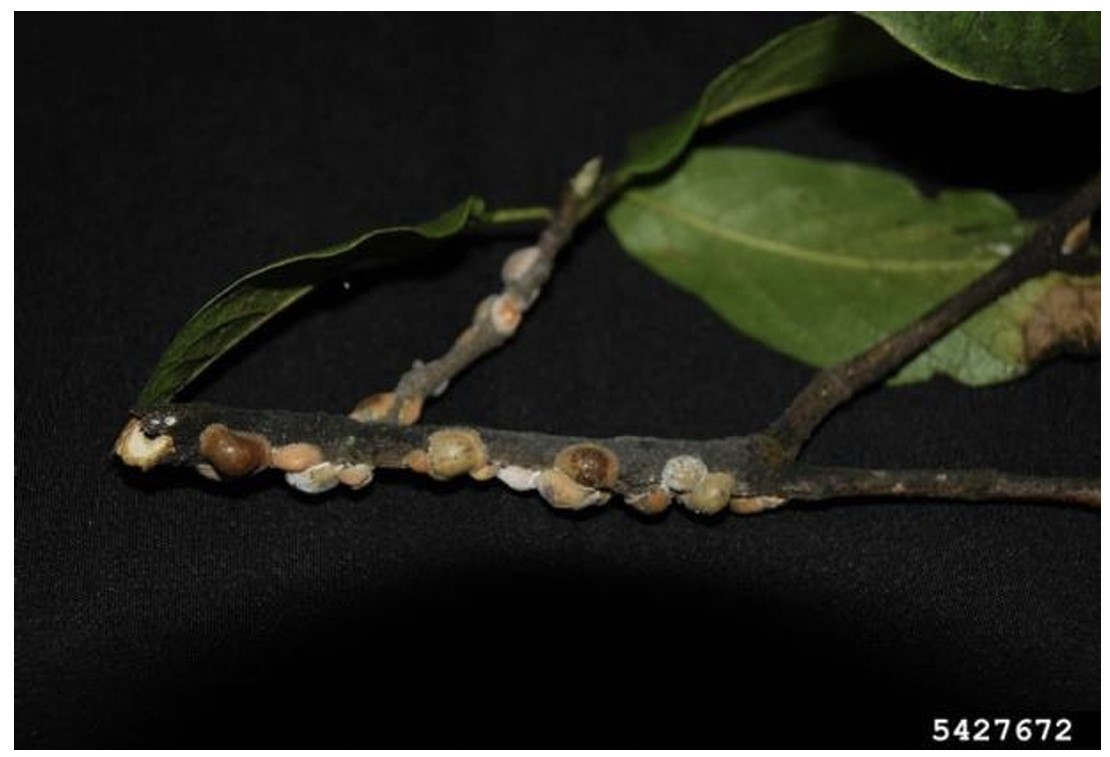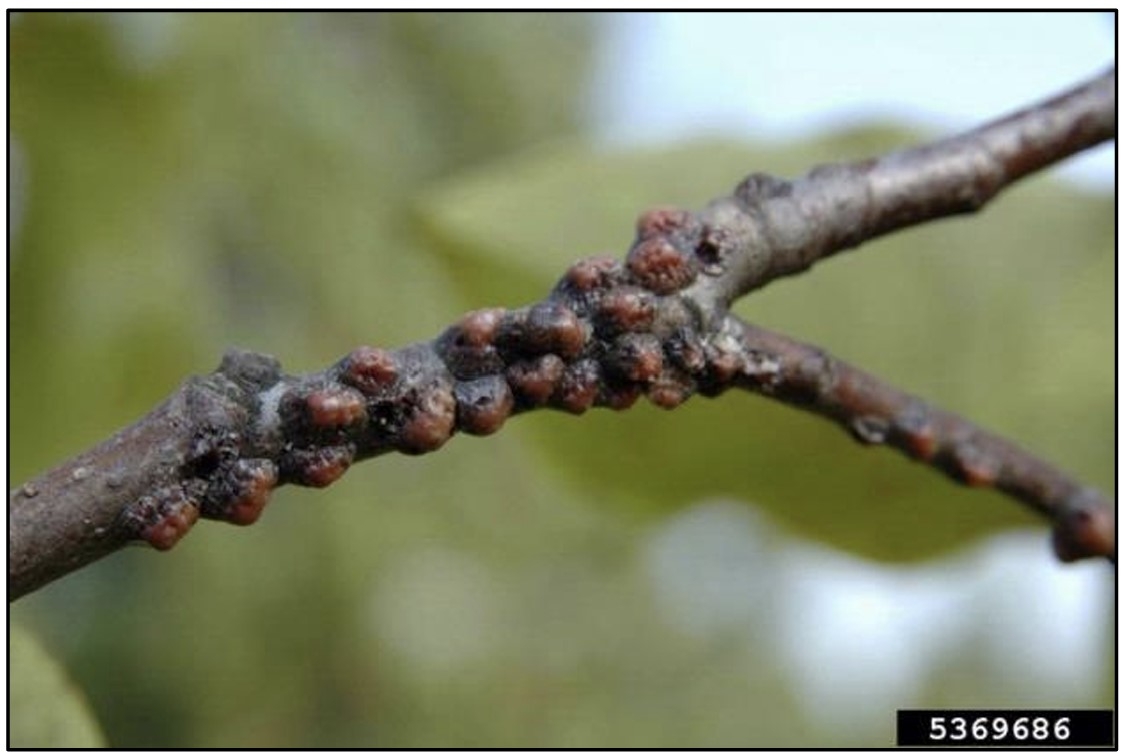Magnolia Soft Scale
ID
444-623 (ENTO-360NP)
Plants Attacked
Wild and ornamental magnolia species and hybrids.
Description of Damage
Heavy infestations of magnolia scale produce stunted twigs and leaves, which weaken the host tree. Large trees lose branches and their tree shape may become irregular, while small trees may be killed. Large populations of scales produce heavy amounts of honeydew. Honeydew accumulates on plants and objects under the host tree and promotes the growth of sooty mold.
Identification
Magnolia scale ranges in color from an orange-tan or dull grayish-brown to a dark brown or a smoky hue with a darker margin (Fig. 1). Younger individuals are covered with a powdery wax material, but lose this covering as they mature. Mature scales have a shiny, varnished appearance (Fig. 2). Females are hemispherical and large, about 1.3 cm (0.5 inch) in diameter.
Hemiptera: Coccidae, Neolecanium cornuparvum (Thro)


Life History
Overwintering scales begin feeding in late spring or early summer and mature by early August. Females give live birth to crawlers in late August. The crawlers soon settle and feed on plant sap. The scale nymphs feed and develop until cold weather and overwinter in this stage. There is one generation per year.
Control
Keep trees in good health. Mulch and keep watered during dry spells. Avoid applying too much fertilizer as this can trigger an outbreak in scale populations.
Prune out and destroy heavily infested branches. Spray dormant oils in March or April prior to bud opening to smother overwintering scales. Spray for crawlers September 1-20. See the Virginia Pest Management Guide for Home Grounds and Animals (PMG 456-018) for specific insecticide recommendations.
Remarks
Controlling crawlers is usually easier and, in most cases, gives more effective results than targeting adult scales.
Revised
Theresa A. Dellinger, February 13, 2020.
Virginia Cooperative Extension materials are available for public use, reprint, or citation without further permission, provided the use includes credit to the author and to Virginia Cooperative Extension, Virginia Tech, and Virginia State University.
Virginia Cooperative Extension is a partnership of Virginia Tech, Virginia State University, the U.S. Department of Agriculture, and local governments. Its programs and employment are open to all, regardless of age, color, disability, sex (including pregnancy), gender, gender identity, gender expression, genetic information, ethnicity or national origin, political affiliation, race, religion, sexual orientation, or military status, or any other basis protected by law.
Publication Date
March 31, 2020



